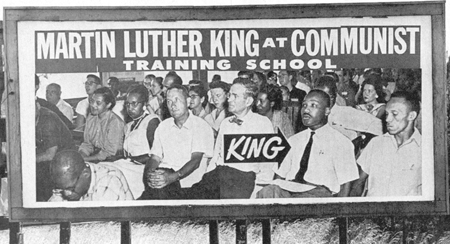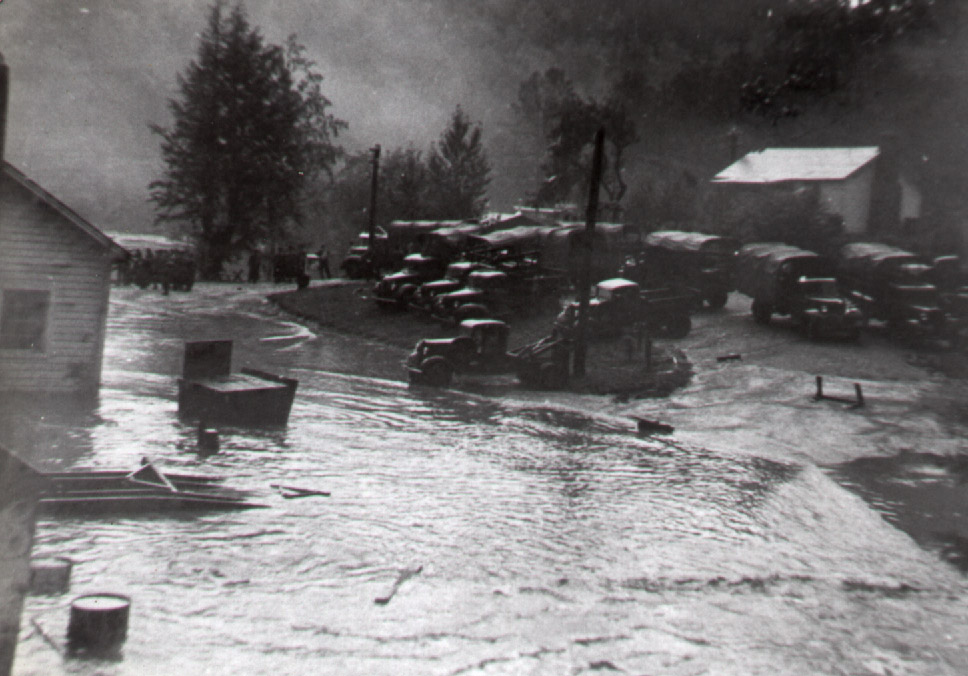The following is not from a Twilight Zone episode, it is from a news report in The Independent Herald, in Pineville, West Virginia. A creature is lost in Oceana, West Virginia, in 1978.
The Oceana Creature
by Ron Mullens; Courtesy of the Independent Herald
Is a seven-foot humanoid monster with Olympic jumping ability and an unearthly cry stalking the night shrouded streets of Oceana? Patrolman Bill Pratt of the Oceana Police Department says the monster exists "and it isn't any (censored) bird, either!"
Pratt says he had his close encounter with the beast early Monday morning while on patrol near the Oceana Town Hall. Others who have heard the creature's call or who have caught fleeting glimpses of the unidentified varmint write it off as misdirected crane or heron which somehow mistook the town of Oceana for the marshlands of the Atlantic or Gulf Coast. But Pratt, questioned by town officials, citizens, Department of Natural Resources personnel, the news media and even monster chasers from Ohio and beyond, remains steadfast in his contention that what he saw near the Johnny Aliff residence early Monday morning was not a bird "and it wasn't like anything else I ever saw."
Oceana Town Recorder Vaughin Cozort says Pratt is a level-headed officer, not given to flights of fancy or exaggeration. "I think he really believes he saw what he says he did, and since I didn't see it, I can't very well say it isn't so." Cozort said of Pratt.
The officer's encounter with the whatever-it-is came before dawn Monday morning while he was on patrol.
"I radioed the jail and told them I'd be out of the car checking on some babies crying." Pratt explained, with a shudder and a "you can believe it or not, but I'm not lying"look in his eye. "I checked this trailer and the man said it was probably cats fighting. We couldn't find any evidence of a cat fight, so we started to check the neighborhood to find out where the weird sound was coming from. Then it let out a squall that scared me to death. I mean, the hairs on the back of my neck stood straight up. I've never heard anything like it"
The policeman, recounting the episode in the dark, foggy pre-dawn hours the day after the encounter, paused, took a deep breath and cast a nervous glance around before continuing. "I went on down toward Johnny Aliff's house and I saw what I thought was a man standing under a street light. I noticed that it was big, but he didn't move to hide from me and with that noise, it wasn't really usual for somebody to be out there. When I got closer, it kind of turned around with it's back to me. It was near the river bank and it crouched down."Pratt said. "Then it kind of leaped and I hollered at it. I thought it was somebody who'd been into something and was trying to get away form me, and it had jumped down over the bank to the edge of the river. But I shined my spotlight down and it wasn't there. It had jumped completely across the river. It had to have jumped, because I didn't hear any splashing and as close as I was, I would have heard if it had hit the water. I saw it moving up the bank on the other side, and I fired six shots at it. After that, I just don't remember. I was scared to death." The river at that point is 50 to 75 feet across, he said.
Oceana Police Chief Raymond Walker said he heard the shots and came to Pratt's location on the river bank to assist.
"When I got there, Bill was still trying to shoot but he'd emptied his gun at it. He was standing there pulling the trigger, and the gun was going 'click, click, click.' He was white as a sheet, and shaking." Walker said. He noticed movement in the brush, and fired three or four rounds, but he said he never got a good look at the thing.
Searchers gathered at the river at dawn and just before they crossed the river, the creature's blood-curdling cry was heard again. Pratt said it was more distant, and sounded as though it came from halfway up the mountain. The searchers checked the area where Pratt said the "thing" landed on the river bank and found broken branches, trampled weeds and what appeared to be heel prints next to an upturned rock. No blood, feathers or any other evidence was found, however.
"I hope I never see anything like it again." Pratt said. "I honestly don't know what it was, but it wasn't like anything I ever saw or heard of before. And that scream..." Pratt broke off, shuddering again.
Personnel from the state Department of Natural Resources investigated the area and spoke with witnesses Monday night but were unable to reach any conclusions. The operative theory at this point, according to a spokesman, is that it was a large wading bird, perhaps a crane or heron, possibly with wing damage which prevents it from extended flight.
Oceana Mayor John Roach said other residents have reported what appeared to be a crane in the area over the past two weeks, and joined the Department of Natural Resources in urging that the creature not be shot at. Pratt, meanwhile, remains unconvinced.
"It was dark colored, and it looked like a man. A bird has spindly legs and a crane would have a long neck. This didn't have either. It was like a man, only big, and it must have weighed 300 pounds. You can laugh at me and think I'm crazy if you want, but I saw it, and I don't want to see it again" the officer said.
Whether bird, beast, or prankster, the sightings have created a minor uproar in the community, but Chief Walker said to this point, the creature hasn't harmed anybody or made threatening moves.
"I don't think it could hurt you, because it's had the opportunity to attack and it hasn't. It's moved away, so I don't think anybody should fear for their safety," Walker said. "Maybe not," Pratt responded, "but if I see it again I'm sure not going to go up to it an try to start a conversation."
{Story Courtesy}Independent Herald as published 16 Aug 1978, Volume 55 Number 33.


















